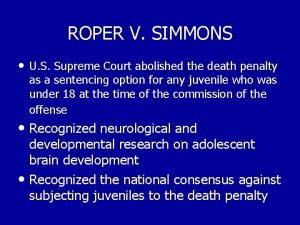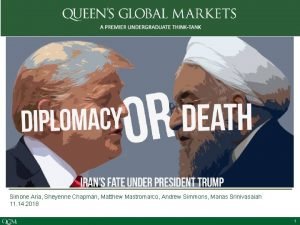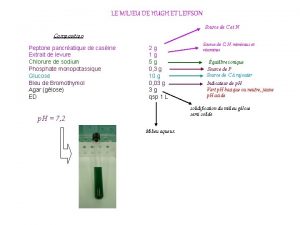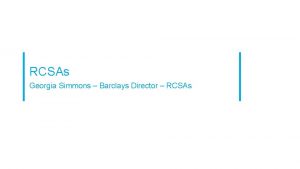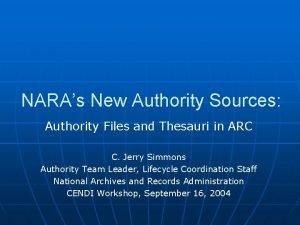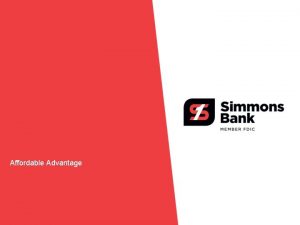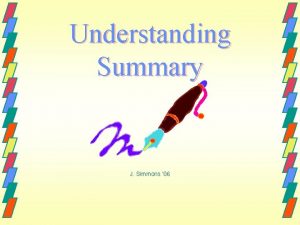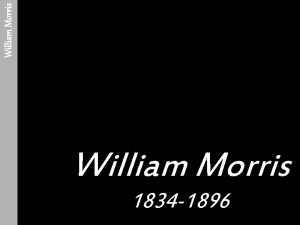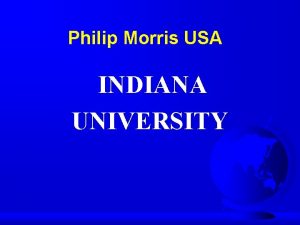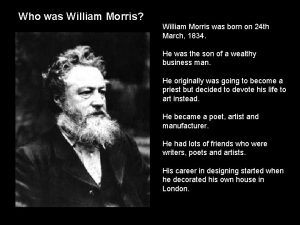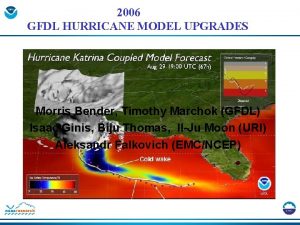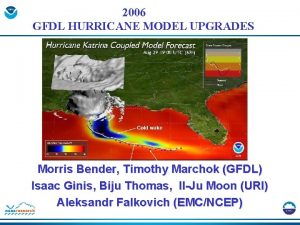Simmons case summary Professor Timothy Morris August 2014












- Slides: 12

Simmons case summary Professor Timothy Morris August 2014

Eitel on Simmons and the GGOL. ‘Simmons was a very autocratic, formal, stiff, bureaucratic company. Corporate thought the people at the plants were there to serve them. They had it completely backwards…. Our plants all had very different cultures. They had very little communication; they competed with each other. We had awards we would give out. If it meant hurting another plant to win an award, they would actually do it. ‘

Simmons culture change • Two-step change strategy • • Generate emotional energy through GGOL (change through energizing people) Channel emotional energy through specific operational goals (change through coordinating employees behaviour) • Assumption of the Eitel/GGOL plan: developing employee potential leads to higher organisational potential • Develop team-working behaviours and technical skills • Establish clear goals to create incentives for those with new skills/behaviours • Pay attention to hard systems (work flows; tasks and goals; measures of performance; controls) and soft systems (culture; sociability) • Identify the sacred (good) and profane (bad) through examples i. e. different plants; different management behaviours; different operator behaviours

Simmons • What were the options for Eitel? • • • Cut costs? How and where? Easy/hard? Find new sales? Grow via new or existing customers? Raise productivity and quality? Transfer existing plant best practice from Janesville: what is implied by this strategy? • To make GGOL work: • • • Follow-on team-based learning linked to operational improvements Sustain the positive experience from GGOL: build confidence; encourage productive collaboration Set targets around key performance drivers: safety; quality; service; cost

Simmons and GGOL pay-off ‘The key here was to create an environment where people feel like they’re making a difference, where they can have fun, where they are free to make decisions beyond the boundaries of a typical company. A lot of this comes from the culture we’ve created. ’… There’s a lot of power in people coming together and sharing their truths and their beliefs about what’s what. That’s what the Great Game of Life is about. ’ ‘We rank [safety, quality, service, cost] in that order…we have monthly business reviews and examine those four categories in considerable detail. If we focus on [them] we believe that everything else will take care of itself. ’ For example: ‘We’re a make-to-order company. When we get an order there’s been a belief that you have to make it immediately. We learned that not all of our customers wanted everything immediately…we found that a week is fine, even 10 days is fine…there is more time to plan production which ties to the fourth metric, cost. ’

Simmons § In December 2003, Fenway Partners sold Simmons to Thomas H. Lee Partners for $1. 1 billion – More than doubled their initial investment of $513 million § Top management team became equity partners in Simmons.

Simmons § An estimated 75 -80% of workforce completed GGOL by May 2005 § Post-GGOL Simmons significantly increased its investment in its people: – Improved systems for training and tracking employee skills development – Increased breadth of employee training – Implemented Pay. Plus – making portions of pay contingent on performance: quality; output/target; productivity of plant – Implemented Team Growth Process to continue learning for intact teams (intensive development to create High Performing Teams over 5 years process)

Some Operational Results § Zero Waste: Target surpassed by 40% in first year (Saved $21 million) § Sales growth 17% gain in first year

Exhibit 12 Simmons Adjusted EBITDA, 1999 -2004 (in millions) Source: Casewriter created this graph based on figures provided by the Simmons CO. CEO.

And then. . . . Things went a bit pear-shaped in 2005 Simmons new Healthsmart mattress did badly First quarter sales weak; miss target by 30% In 2005, EBITDA dropped to $114 mil from $131 mil in 2004 Followed by a speedy recovery from mid 2005, over ten months 2006 EBITDA reaches new high of $150 mil 2007 upward trend continues

Think culture models… A new member of the Exec Leadership team observed: “When I joined the company the focus of management attention was on emotion. We had to get our act together and take what Charlie offered and turn it into useful business results. Being good and caring with people is necessary but it’s not sufficient. It’s the difference between the ‘what’ and the ‘how’. The ‘how’ is necessary but it’s not enough without the ‘what’. BUT people who can only do the ‘what’ and not the ‘how’ are a liability. You need a special combination – a hard-business that is results-oriented and cares about people just as much”

But tears before bedtime. . Hit hard by housing collapse; economy fell into recession. 2008 earnings dropped to $95 mil but showed some recovery in 2009. All three major players in US mattress industry were suffering sleepless nights… Bankruptcy was mainly triggered by mountain of debt accumulated through series of private equity ownerships Simmons debt increased from $290 mil to $770 mil with THL purchase. Rose further to $917 mil as THL issued dividends to itself – firm’s credit rating fell in 2008 -09
